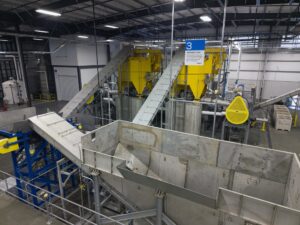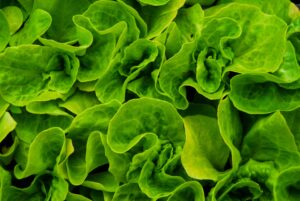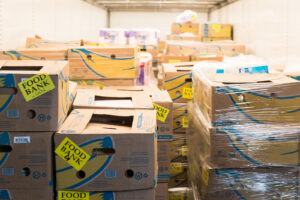July 21, 2023
According to the EPA, compost isn’t always great. For commercial food waste generators in particular, the positive impact of waste diversion can be overshadowed by unintended negative effects of commercial composting. Read more to learn when composting is beneficial, when it isn’t, and why anaerobic digestion scores higher on the EPA’s Food Recovery Hierarchy.
Increased Wasted Food is Spurring Waste Diversion Legislation
Wasted food presents a growing and ever-present climate threat. Increasingly, states are adopting new waste diversion legislation to reduce the amount of organic waste that ends up in landfills. While these laws are a big step in the right direction, it’s not enough to simply keep organic waste out of the landfill. To have the biggest environmental impact, waste producers need to think seriously about where their material is being diverted and how it is being processed.
Is Commercial and Residential Composting the Same?

Small-scale residential composting is still a great option for reducing your organic waste at home. Composting scraps instead of discarding them can significantly reduce methane emissions, according to the EPA. And if you have a home garden, composting is a great way to feed essential nutrients back into the soil. Your home composting program can be a miniature circular economy right in your backyard.
On a slightly larger scale, curbside compost programs can be a great option for tackling sources of wasted food, so long as the material is a mix of green (yard) waste combined with low amounts of clean food scraps. As curbside food waste programs scale for residences and commercial businesses, this balance can be tricky to maintain.
What is the Best Waste Diversion Method for Commercial Waste Generators?
This brings us to our central question: what about commercial waste generators and municipalities looking to deploy residential or back-door organic diversion programs? Are composting programs the best solution for their high volumes of organic waste? While it may seem like an attractive option – particularly because, in many places, the composting infrastructure already exists – there are two key reasons why these large-volume generators should look beyond composting:
- Wasted food is 80% – 85% water and composting is not well suited to large volumes of high moisture content material.
- Many commercial-grade composting operations lack adequate depackaging technology. Composting food that has not gone through depackaging can spread harmful PFAS chemicals over fields of fresh food, presenting significant human health risks. A single plastic bag in a compost pile can become thousands of pieces of microplastics that are impossible to remove from finished compost.
For these reasons, many large waste generators and local jurisdictions see anaerobic digestion as the most suitable alternative for packaged or contaminated food material.
Why is Anaerobic Digestion a Better Solution?
Where anaerobic digestion is leveraged as part of the mix for diverting organic waste, there are several environmental benefits:
- Food waste processing and conversion via anaerobic digestion is a wet process, so filters can be used to more easily remove microplastics from ever being reintroduced into the environment.
- Anaerobic digestion is higher on the EPA’s Food Recovery Hierarchy than composting. The higher a solution places on this hierarchy, the more it is perceived to benefit the environment, society, and the economy.
- Many advocates have pressed EPA to update its hierarchy to ensure it considers overall emissions reduction and carbon intensity for all recommended solutions.
- For example, making animal feed out of wasted food is also high up on the hierarchy. Divert operates one facility that diverts wasted food feedstock to animal feed – however, Divert has found that in almost every case, diverting wasted food to animal feed is impractical and uneconomical due to the greenhouse gas emissions associated with transportation.
- The EPA has recently reported that it would be revisiting its hierarchy to consider how all aspects of the circular economy should impact food waste reduction strategies.
- Anaerobic digestion of food waste exceeds waste-to-energy incineration and compost production by a significant margin with respect to lifecycle GHG emission reductions1. It offers the greatest potential for reducing GHG emissions, followed by food donation, animal feed production, waste-to-energy incineration, and compost production.
- While the methane emissions from compost piles are not always contained, the anaerobic digestion process captures these emissions and puts them to good use. The biogas produced by anaerobic digestion can be converted into a variety of energy formats, which can translate into additional GHG reductions by offsetting fossil fuel use.
- Anaerobic digestion has other useful byproducts. The carbon dioxide contained by the anaerobic digestion process can be captured and used in adjacent greenhouses to grow new food. The nitrogen captured by anaerobic digestion can also be separated and concentrated to more easily replace non-renewable forms of nitrogen for fertilizer, further contributing to fossil fuel reduction.
- Thanks to the Inflation Reduction Act, infrastructure to responsibly manage organic waste – including anaerobic digestion infrastructure – is being increasingly funded and growing nationwide.
Closing Thoughts on Waste Diversion
As our landfills inch toward capacity, lawmakers at the state and federal level are sure to increase legislative efforts to curb wasted food. To comply with these emerging laws and meet our climate goals, waste generators of all sizes need to look beyond existing solutions like composting. Divert has the resources and experience to optimize diversion programs and ensure customers are making a lasting impact on the environment and society through sustainable change.
- Science Direct (July 30, 2010), “A life cycle approach to the management of household food waste – A Swedish full-scale case study”



